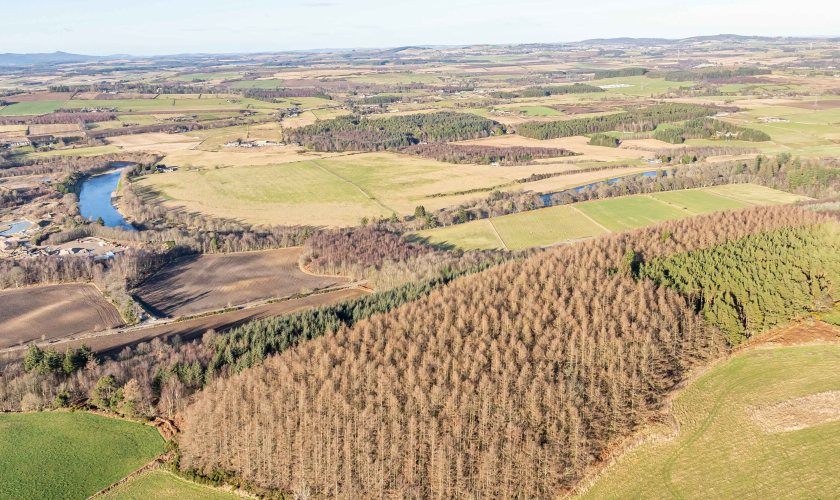
The commercial forestry market is showing signs of recovery after a two-year dip, with high-quality plantations commanding strong values and renewed interest from investors,.
While average values for plantations softened further in 2024 — down around 10% to £18,900 per stocked hectare — a new report paints a more complex picture than the headline figures suggest.
“We continue to see strong prices paid for well-located, quality plantations,” said Simon Hart, head of forestry in Scotland at John Clegg & Co.
“Values of over £20,000/ha remain common, with peaks of £30,000/ha still being occasionally achieved.”
A key factor behind the apparent fall in average prices is a drop in the average yield class of sold forestry, which decreased from 19.1 in 2023 to 16.2 in 2024.
“Lower-yielding crops are inevitably worth less, so this alone accounts for the apparent drop in average values when looking year-on-year,” Mr Hart explained.
In total, 29 forests were sold across Britain in 2024 — up from 20 in 2023, though still below the five-year average of 44.
The market value reached just under £94 million, more than double the 2023 figure (£45 million), but again short of the five-year average of £151 million.
Sales prices in 2024 averaged 107% of guide prices, slightly above the previous year, but still below long-term trends. The vast majority of sales occurred in Scotland, in line with usual market patterns.
Looking ahead, Mr Hart expressed cautious optimism: “We continue to see strong interest in good properties with a number of sales concluded or under offer in 2025 Q1 and new funds moving into the market.
"Overall, we see continued steady demand for woodlands and do not anticipate significant changes in values," he added.
However, demand appears to be softening for more remote forestry sites dominated by pine and lower growth rates, according to John Clegg & Co's report.
Combined with flat timber prices and rising harvesting and haulage costs, net returns have come under pressure, which is increasingly reflected in sale prices.
Despite this, long-term fundamentals remain robust: global demand for timber continues to grow, and falling interest rates are expected to support investment.
Although upcoming changes to business property relief (BPR) in April 2026 and evolving trade tariffs — especially in the US — are being closely watched, they have not yet had a discernible impact on UK forestry values.
With several deals already progressing into the first quarter of 2025, John Clegg & Co expects a steady year ahead for the sector, driven by interest in well-managed, strategically located plantations.
